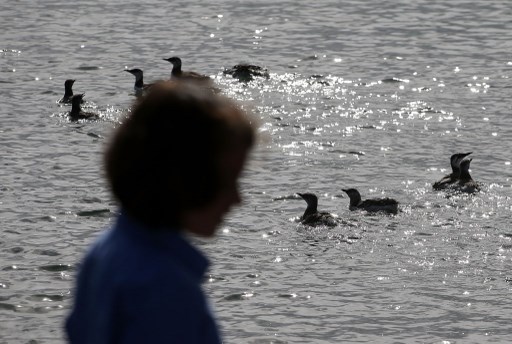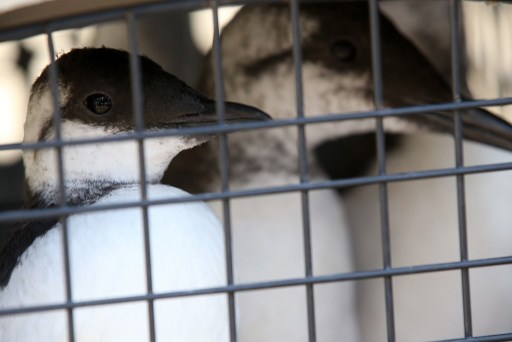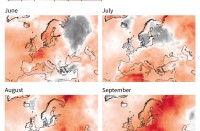
WASHINGTON, D.C., United States (AFP) – Issam AHMED
Around a million North Pacific seabirds known as common murres died during a 2015-16 heatwave that disrupted their food supply, scientists said Wednesday, the biggest mass mortality event ever recorded among avian species.
Julia Parrish, an ecologist at the University of Washington and co-author of a paper on the subject published in the journal PLOS ONE told AFP that the increased frequency of such heatwaves appeared to be “relatively new” and linked to climate change.
From 2014 through 2016, an enormous mass of warm seawater nicknamed the “blob” was joined by a strong El Nino, with the two combining to create a marine heatwave stretching from California to Alaska.
El Nino is an irregularly occurring global climate phenomenon associated with warm waters developing in the central and east equatorial Pacific.
During the period from summer 2015 to spring 2016, around 62,000 emaciated murres washed ashore dead or dying along the North American Pacific coastline — in Alaska alone the rate of die-off was a thousand times higher than normal.
Since only a tiny fraction of birds that die was ashore on areas that are accessible, they estimated the total amount of deaths was between half a million to 1.2 million.
By comparison, 30,000 bird carcasses were recovered after the Exxon Valdez oil tanker spill off the Alaskan coast in 1989, leading to overall death estimates of 300,000 to 600,000, said John Piatt, a research biologist at the US Geological Survey’s Alaska Science Center and the paper’s lead author.

– How it happened –
Parrish said the effects of the heatwave were two-fold. First, elevated temperatures reduced the quality and quantity of phytoplankton, which in turn reduced the quantity and quality of the fish eaten by common murres — prey like herring, sardines and anchovies.
Second, as waters warmed, it increased the energy requirements of larger fish like salmon and Pacific cod, that have the same prey as the murres, foot-long birds with black and white bellies that are fast flyers and adept at diving at depths up to 200 meters below the water’s surface to forage.
Piatt added that the murres’ evolutionary “Achilles heel” was their need to consume half of their body mass every day.
“Everything they do depends on that breast muscle. And when they can’t eat three or four days, they burn up all that muscle,” and can no longer fly or dive, he told AFP.
Compounding the problem, many of the birds that died were of breeding-age. Murre breeding colonies across the entire region failed to produce chicks for years during and after the heat wave event, the study found.
Several other species experienced mass die-offs during the same period, including tufted puffins, Cassin’s auklets, sea lions and baleen whales.
But the common murre die-off was by far the largest recorded by all metrics — overall number, duration and geographic extent — the area affected was equivalent in size to Canada.
Taken together, the mass mortalities demonstrate that “a warmer ocean world is a very different environment and a very different coastal ecosystem for many marine species,” said Parrish, with sea birds, as highly visible members of that system, “bellwethers of that change.”
© Agence France-Presse







